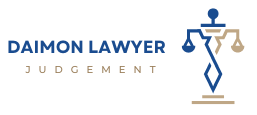Steps to Maximize Your Compensation
Daimon
July 1, 2024

Steps of Employment law is a crucial aspect of business operations that governs the relationship between employers and
Employment law steps is a crucial aspect of business operations that governs the relationship between employers and employees. Steps that Understanding and complying with employment laws is essential for businesses to avoid legal pitfalls, maintain a positive work environment, and protect their interests. In this article, we will explore key considerations in employment law that every business should be aware of.
1. Employment Contracts and Offer Letters
Employment contracts and offer letters lay the foundation for the employer-employee relationship. some steps is important for businesses to draft clear and comprehensive employment agreements that outline the terms and conditions of employment, including job responsibilities, compensation, benefits, and termination clauses. These documents help clarify expectations and protect both parties in case of disputes.
2. Wage and Hour Laws
Wage and hour laws set forth regulations regarding minimum wage rates, overtime pay, and hours of work. Businesses must comply with federal, state, and local wage laws to ensure employees are fairly compensated for their work. It is important to accurately classify employees as exempt or non-exempt from overtime pay requirements and to keep detailed records of hours worked to avoid wage disputes.
3. Anti-Discrimination and Harassment Policies
Employment laws prohibit discrimination and harassment based on protected characteristics such as race, gender, age, disability, and religion. Businesses must have robust anti-discrimination and harassment policies in place and provide regular training to employees and managers. Creating a respectful and inclusive workplace culture not only fosters employee morale but also mitigates the risk of costly litigation.
4. Family and Medical Leave
The Family and Medical Leave Act (FMLA) provides eligible employees with up to 12 weeks of unpaid leave for qualified medical and family reasons. Businesses covered by FMLA must inform employees of their rights and responsibilities under the law and ensure compliance with leave entitlements. Understanding FMLA requirements and accommodating employees’ leave requests are critical aspects of compliance.
5. Workplace Safety and Health Regulations
Occupational Safety and Health Administration (OSHA) regulations mandate that businesses provide a safe and healthy work environment for employees. Employers are required to implement safety protocols, provide training on workplace hazards, and maintain records of workplace injuries and illnesses. Compliance with OSHA standards not only protects employees from harm but also avoids penalties and litigation.
6. Employee Privacy and Data Protection
Employers must respect employee privacy rights and adhere to laws governing the collection, use, and protection of employee personal information. Businesses should establish policies and procedures for handling sensitive employee data, such as Social Security numbers and medical records, to prevent unauthorized access or disclosure. Compliance with data protection laws, such as the Health Insurance Portability and Accountability Act (HIPAA), is crucial to avoid legal liabilities.
7. Employee Discipline and Termination
Employers have the right to discipline and terminate employees for misconduct or poor performance, but it must be done in accordance with employment laws and company policies. Businesses should establish clear disciplinary procedures, provide written warnings when appropriate, and document all disciplinary actions taken. Wrongful termination claims can arise if employees believe they were dismissed unlawfully, so businesses should seek legal advice before taking adverse employment actions.
employees. Understanding and complying with employment laws is essential for businesses to avoid legal pitfalls, maintain a positive work environment, and protect their interests. In this article, we will explore key considerations in employment law that every business should be aware of.
1. Employment Contracts and Offer Letters
Employment contracts and offer letters lay the foundation for the employer-employee relationship. It is important for businesses to draft clear and comprehensive employment agreements that outline the terms and conditions of employment, including job responsibilities, compensation, benefits, and termination clauses. These documents help clarify expectations and protect both parties in case of disputes.
2. Wage and Hour Laws
Wage and hour laws set forth regulations regarding minimum wage rates, overtime pay, and hours of work. Businesses must comply with federal, state, and local wage laws to ensure employees are fairly compensated for their work. It is important to accurately classify employees as exempt or non-exempt from overtime pay requirements and to keep detailed records of hours worked to avoid wage disputes.
3. Anti-Discrimination and Harassment Policies
Employment laws prohibit discrimination and harassment based on protected characteristics such as race, gender, age, disability, and religion. Businesses must have robust anti-discrimination and harassment policies in place and provide regular training to employees and managers. Creating a respectful and inclusive workplace culture not only fosters employee morale but also mitigates the risk of costly litigation.
4. Family and Medical Leave
The Family and Medical Leave Act (FMLA) provides eligible employees with up to 12 weeks of unpaid leave for qualified medical and family reasons. Businesses covered by FMLA must inform employees of their rights and responsibilities under the law and ensure compliance with leave entitlements. Understanding FMLA requirements and accommodating employees’ leave requests are critical aspects of compliance.
5. Workplace Safety and Health Regulations
Occupational Safety and Health Administration (OSHA) regulations mandate that businesses provide a safe and healthy work environment for employees. Employers are required to implement safety protocols, provide training on workplace hazards, and maintain records of workplace injuries and illnesses. Compliance with OSHA standards not only protects employees from harm but also avoids penalties and litigation.
6. Employee Privacy and Data Protection
Employers must respect employee privacy rights and adhere to laws governing the collection, use, and protection of employee personal information. Businesses should establish policies and procedures for handling sensitive employee data, such as Social Security numbers and medical records, to prevent unauthorized access or disclosure. Compliance with data protection laws, such as the Health Insurance Portability and Accountability Act (HIPAA), is crucial to avoid legal liabilities.
7. Employee Discipline and Termination
Employers have the right to discipline and terminate employees for misconduct or poor performance, but it must be done in accordance with employment laws and company policies. Businesses should establish clear disciplinary procedures, provide written warnings when appropriate, and document all disciplinary actions taken. Wrongful termination claims can arise if employees believe they were dismissed unlawfully, so businesses should seek legal advice before taking adverse employment actions.

Conclusion
Steps of Navigating employment law requires businesses to stay informed about regulatory changes, implement effective policies and procedures, and seek legal guidance when necessary. By understanding and complying with employment laws, businesses can create a fair and productive work environment while minimizing legal risks and protecting their reputation. Investing in proactive compliance measures not only ensures legal compliance but also strengthens employee relations and enhances business success.




